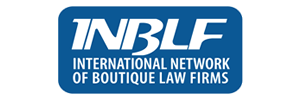By: Chuck Asmar and Mike Wagner
If you ever made or received payment on a construction project, chances are you came across a lien and claim waiver form. What’s in a waiver? What’s the effect of a waiver? How are they treated in DC, Maryland, and Virginia?
A lien and claim waiver, also referred to as a release, is a legal document signed by a general contractor, subcontractor, supplier or materialman prior to or in exchange for payment. Contractors or subcontractors typically submit waivers with their payment applications. By signing a waiver, the claimant waives certain rights in exchange for the payment received— rights to file a mechanic’s lien against the Project, a bond claim, or to assert a payment claim against the entity with whom it has contracted (i.e. contractors, owners, lenders, or anyone else with an interest in the property).
When a claim arises, waivers are critical to help determine what payment rights a claimant might have on a project, if any. For instance, if a contractor has unresolved claims, pending change orders, or claims that have not yet been submitted on a Project at the time the contractor signs a waiver, it’s likely that those claims and change orders will be released and the contractor will have no chance for recovery against the owner for breach of contract or through a statutory mechanic’s lien claim. For this reason, contractors/subcontractors must carefully review the waivers they are signing to determine what rights they are relinquishing. Likewise, an owner must carefully review the waiver in exchange for payment. When properly drafted, waivers can provide a “bright line” for determining whether or not a claim is timely and has any hope for success.
The waiver can also assure the owner that claims will not be filed against the Project by requiring the contractor to certify that all of its lower-tier subcontractors and suppliers have been paid through the date of the last payment made by the Owner. Often, cautious Owners will require lien and claim waivers from both the contractor and its subcontractors so as to avoid the need to make double payments for contractors who fail to make payment to their subcontractors.
Waivers generally come in two forms: a “payment” waiver or a “performance” waiver. The payment waiver provides that the claimant relinquishes its right to file a lien or claim against the Project (and in many cases the upstream contracting entities) to the extent of the payment received; whereas, in a performance waiver, the claimant is waiving its right with respect to all work performed on the Project through a date certain. The performance waiver is far more broad than the payment waiver as it operates to release all claims through the date of the waiver (even if the claims are pending and unresolved).
Waivers may be conditional or unconditional. In a conditional waiver, the claimant is executing the waiver to induce payment, but represents that it has not yet been paid for the amount set forth in the waiver. A conditional waiver and release becomes effective upon receipt of the payment by the claimant. Conversely, in an unconditional lien waiver, the claimant executes a waiver that represents it has received payment. An unconditional release is immediately effective. A final unconditional release is given in exchange for final payment on a project and typically releases all claims, unless the contractor reserves rights for any unsettled claims or disputes within the four corners of the waiver form.
In most commercial construction projects, lien and claim waivers are required by the contract between the parties. For example, the American Institute of Architects A-201 2017 General Conditions of the Contract for Construction give the right to the Owner to request releases and waivers of lien from the Contractor and its subcontractors and suppliers when the Contractor submits its payment application. At the time of final payment, Section 9.10.2 allows the Owner to request “data establishing payment or satisfaction of obligations, such as… releases and waivers of liens, claims, security interests or encumbrances arising out of the Contract…” Waivers should be treated as “mini” contracts because the claimant is agreeing to give up rights, the owner is agreeing to make payment based, in part, on the rights waived by the claimant, and the agreement is supported by consideration, i.e. the payment itself and the waiver.
The AIA has developed standard form lien and claim waivers. Some parties will go with the unmodified AIA forms. But many owners, developers and contractors prefer custom-tailored lien and claim waivers. There are as many permutations and iterations of waivers as there are contractors and owners, each with their own intricacies and nuances. Again, it is imperative to carefully read the waivers to determine what is actually being released.
In some jurisdictions, legislatures have enacted statutory lien and claim waiver forms that must be used for all construction projects. These jurisdictions include: Arizona, California, Florida, Georgia, Massachusetts, Michigan, Mississippi, Missouri, Nevada, Texas, Utah, and Wyoming. If you’re performing work in these jurisdictions, you should check the specific statute to determine what is exactly required. DC, Maryland and Virginia do not have statutory forms, so entities working in the DC Metropolitan area are likely to see a broad range of lien and claim waivers. The forms will vary from project to project depending on the owner or contractor.
In the District of Columbia, lien and claim waivers are fully enforceable. DC Courts will not render waivers “valueless,” and will enforce the waivers as written, even if the effect of the waiver is harsh. Further, in the District, a contractor can agree to waive its mechanic’s lien rights in the terms of the construction contract itself. However, a general contractor may not waive rights on behalf of its subcontractors under the District’s Mechanic’s Lien Statute; therefore, a waiver of liens in a prime contract cannot “flow down” and be effective against a subcontractor’s mechanic’s lien claim.
Similarly, in Maryland, lien and claim waivers are fully enforceable provided they are clear and unambiguous. However, the Maryland Code does not allow for parties to waive lien rights in construction contracts. Such waivers in executory contracts will be found to be void as against public policy. Again, it’s possible to waive lien and bond rights in Maryland in a separate lien and claim waiver document— just not in the construction contract/subcontract.
In Virginia, lien and claim waivers will be found enforceable and valid and binding on the parties if they are supported by sufficient consideration. The waiver must also contain clear and unambiguous language. But, unlike Maryland, Virginia permits provisions in prime contracts that provide all mechanic’s lien rights are waived. If a general contractor signs a construction contract containing such a provision, it will be effectively precluded from filing a lien against the project. On the other hand, a provision that waives or diminishes a subcontractor’s, lower-tier subcontractor’s, or material supplier’s lien rights in a contract executed prior to providing any labor, services, or materials is null and void.
In conclusion, although the waiver is a routine form that is used on most construction project, it is a critical document that, if drafted properly, can relinquish payment rights and release liability. It is an important tool and owners, developers, contractors and subcontractors should pay close attention to the releases they are signing. Before you sign, always read the fine print.
 Chuck Asmar is a Partner in our Construction Practice Group and represents owners (private and public), developers, general contractors, subcontractors, architects, engineers, sureties, and suppliers in complex design, construction, insurance, and surety-related disputes.
Chuck Asmar is a Partner in our Construction Practice Group and represents owners (private and public), developers, general contractors, subcontractors, architects, engineers, sureties, and suppliers in complex design, construction, insurance, and surety-related disputes.
 Mike Wagner is an Associate in our Construction Practice Group and counsels clients on mechanic’s liens, payment and performance bond disputes, delay and impact claims, design errors and omissions, subcontractor disputes, and construction defect matters.
Mike Wagner is an Associate in our Construction Practice Group and counsels clients on mechanic’s liens, payment and performance bond disputes, delay and impact claims, design errors and omissions, subcontractor disputes, and construction defect matters.






